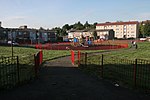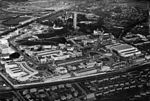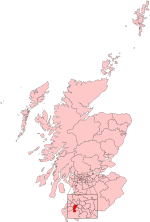Corkerhill Carriage Servicing Maintenance Depot
1896 establishments in ScotlandBuildings and structures completed in 1896Glasgow and South Western RailwayRailway depots in ScotlandScotland rail transport stubs ... and 1 more
Use British English from December 2016

Corkerhill Carriage Servicing Maintenance Depot is located in Corkerhill, Glasgow, Scotland. The depot is situated on the Paisley Canal Line and is to the east of Corkerhill station. The depot code is CK.
Excerpt from the Wikipedia article Corkerhill Carriage Servicing Maintenance Depot (License: CC BY-SA 3.0, Authors, Images).Corkerhill Carriage Servicing Maintenance Depot
M77, Glasgow Dumbreck
Geographical coordinates (GPS) Address Nearby Places Show on map
Geographical coordinates (GPS)
| Latitude | Longitude |
|---|---|
| N 55.8358 ° | E -4.3252 ° |
Address
M77
G52 1TW Glasgow, Dumbreck
Scotland, United Kingdom
Open on Google Maps








